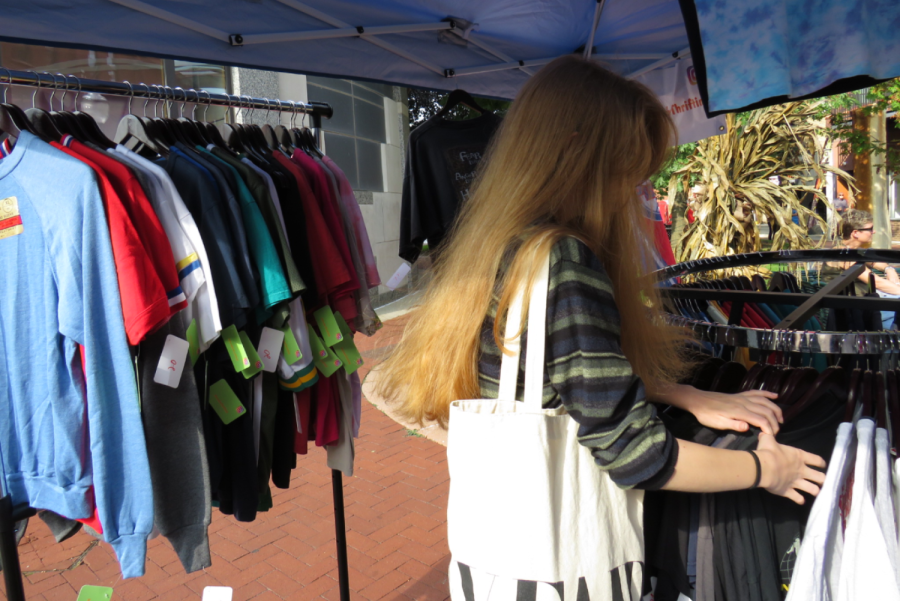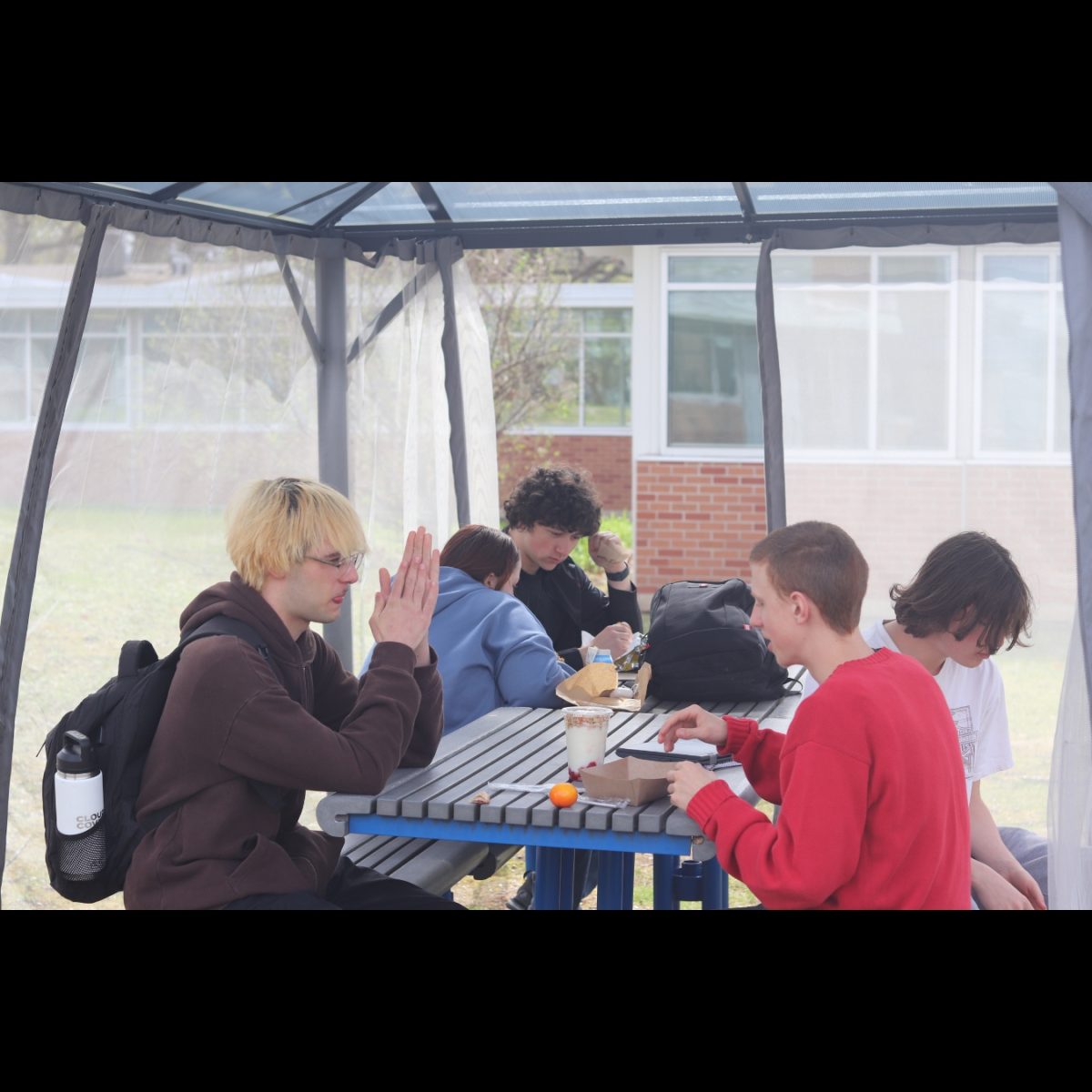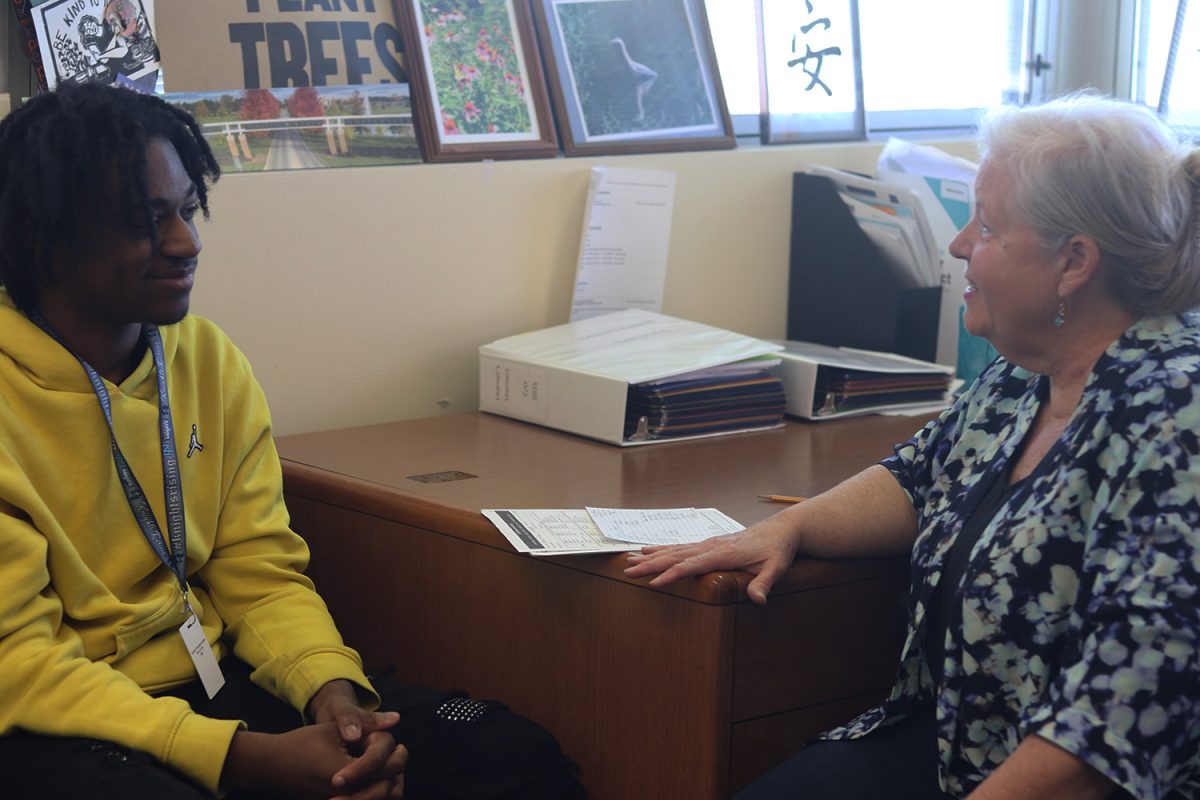Vintage in the Zoo vendors speak on sourcing and sustainability
Credit: Milo Turner
Portage Central Junior Hannah Huff browses a selection of $10 vintage t-shirts.
October 27, 2021
On October 9, from 12 p.m. to 7 p.m. sellers and buyers alike met in the yard behind Anna Whitten Hall, brought together by their shared appreciation for decades-old clothing and furniture.
This event, known as “Vintage in the Zoo,” is held on the second Saturday of each month in various public locations around the city of Kalamazoo, and attendees are drawn in from towns all over southwest Michigan.
Some sellers are regulars at Vintage in the Zoo, and others just recently began participating.
For Kelly Vuljic, the owner of The Vintage Alchemist, this was her first time setting up at the event.
Vuljic sells a variety of vintage and used items, primarily consisting of home decor.
¨I do mid-century, boho, any kind of retro items and also locally sourced handmade items from Michigan,¨ Vuljic said. ¨I do have a booth in Coloma in the Great Lake Antique Mall, but this is my first Vintage in the Zoo pop-up.¨
Vintage resellers typically collect their pieces from a wide variety of sources.
¨I do all my sourcing usually through thrift stores, estate sales, friends and family, and my own personal items that I’ve collected,” Vuljic said.
In recent years, there has been an uptick in second-hand shopping. According to Vogue, second hand-adjacent searches increased by 104% in September of 2020.
¨We’ve seen an increase in traffic for buying second-hand, and it’s all about repurposing items, reduce, reuse, recycle, so I like to take old, vintage items and curate them into a more modern home,¨ Vuljic continued. ¨All of us nowadays are modern, we have things from Target, things like that, but we can be a little bit more eco-friendly and reuse things from the past.¨
Buying used wares and clothing is a safe choice when it comes to making more environmentally conscious choices. According to the BBC, the fashion industry accounts for 10% of carbon emissions around the globe.
Another vendor introducing items from the past into the contemporary wardrobe is Emma Schiller, owner of Second Smiles Vintage, who’s been selling at Vintage in the Zoo since last June and finds retail inspiration from a variety of different sources.
¨I go everywhere, every place you possibly could think of, because you just never know what you’re gonna find,¨ Schiller said. ¨I like looking for things, I feel like it’s like gathering information. It sounds really weird, but I watch a lot of TikToks to see what people are wearing, what people like, just so I can kind of stay on top of things if that makes sense.¨
Reselling can lead to larger business opportunities, but oftentimes it starts right at home.
“I started selling on Depop, like from my closet during quarantine, and then I started selling on Instagram, and then I went to Vintage in the Zoo and was like, ‘okay I wanna do a pop-up,’ so I’ve been popping up all summer,” Schiller said. “I do other events too, like across Michigan. I’m actually going to one in Fort Wayne tomorrow.”
Platforms like Depop, ThredUp and Poshmark help people like Schiller sell clothing, jewelry, and other attire from their own personal online stores. Sellers choose their own price and upload pictures and descriptions of each item.
Similarly, Shareen Cline, the owner of US 12 Vintage Station in Mottville, Michigan, began selling from her own personal collection.
Cline said, ¨I have a huge collection of vintage because I used to work for a radio station, and when I worked at the radio station, it was an oldies station, so that’s when I started wearing vintage, and my collection just got bigger and bigger to the point where I finally had to start selling stuff off.¨
With the average US citizen being predicted to throw out 37kg of clothes each year according to the BBC, supporting small businesses run by those like Cline, Schiller and Vuljic can help alleviate the amount of new clothing in landfills, and provide unique and pre-loved pieces.












